Decorative conifers look great in parks, gardens, in adjoining areas, as well as near administrative buildings. These evergreen plantings not only exude a delicate coniferous aroma, but are natural antiseptics. It is useful for sick people with respiratory diseases to walk in the coniferous forest. But, despite its unpretentiousness, young conifers need protection from the harmful effects of the environment during the winter cold.
Content
Dangers for conifers in the cold season
Young plantations that are not yet 3 years old are particularly vulnerable to cold weather. The main enemies for them are:
- cold frosty wind;
- winter thaws accompanied by snowfall;
- the sun's rays, which are reflected from the snow.
A strong winter wind withers branches, which, when frozen, become brittle and brittle. If possible, it is recommended to plant conifers along buildings that will serve as a cover for plants from the cold wind.
Winter thaws lead to the accumulation of a large amount of snow on the branches and the formation of ice. Branches, weakened by the winter cold wind, often break under the weight of ice.
A severe burn of the needles of young trees can be received at the end of winter, when a bright sun appears, the rays of which, reflected from the snow, damage the coniferous plantations.
Shelter from snow and ice
To protect, lovingly planted yew, cypress or thuja, it is necessary to cover conifers in front of winter cold, especially at a young age. They are wrapped with non-woven materials and fixed with a stapler, or special caps are put on them that are commercially available and attached to rods stuck in the ground.
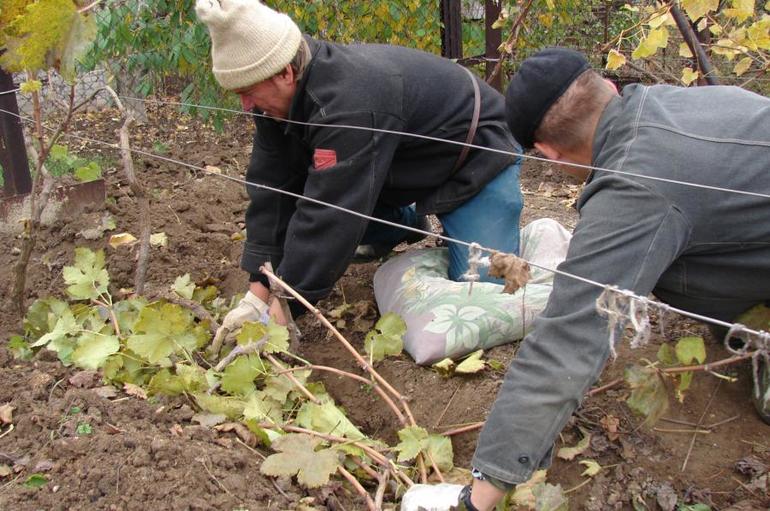 You may be interested in:
You may be interested in:Sun protection
To protect the young tree, which was not covered for winter, from spring rays, it is required to establish sun protection on the south side before heavy snowmelt. An awning is made from any material at hand:
- old sheets sewn together;
- old curtains;
- covering material.
If there is no desire to put an awning, you can cover the coniferous trees with a cloth on top and fix it.
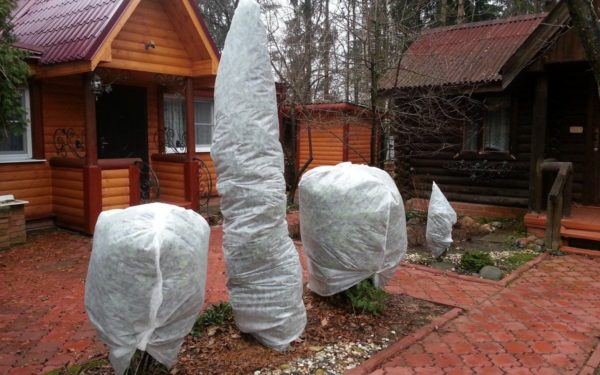
Caring for conifers before shelter
Before starting to shelter conifers for the winter, it is necessary to carry out a number of additional activities that will contribute to the conservation of young plantings. Autumn produce:
- watering to a depth of 50-60 cm in the radius of the root system (in case of heavy rains, the procedure is canceled);
- the application of vermicompost, compost, dolomite flour will give plants the strength to winter;
- mulching with needles, spruce branches, sawdust, peat (hay is not recommended because of the possibility of rodents) contributes to the preservation of the root system;
Shelters of conifers for the winter
To shelter a conifer for the winter, you must first tie not tight to the trunk with twine, preferably natural. Then they wrap it around:
- burlap;
- spanbond;
- agrofibre;
- lutrasil;
- kraft paper.
The edges are fixed with a stapler.
Coniferous shelter on the stem
Plants on the stem require special protection before the onset of cold weather. First thing:
- Protect the place of vaccination from frost and wind. They cover this place with covering material and fix it well.
- Protect the crown, so it can not hold a heavy mass of snow and breaks off at the vaccination site.
The crown can be protected in several ways:
- Iron rods are dug around the perimeter, a metal mesh with small cells is wound on them, a bag of burlap or other covering material is put on top;
- a frame is knocked together from wooden battens on which the covering material is stretched in several layers and attached with a stapler;
- for especially tender conifers (fir on the Icebreaker strain), wooden boxes with lids are knocked together;
- completely cover the whole tree to the ground with covering material.
Having spent some time on these events, you can protect your pets from the vagaries of the weather.
Coniferous shelter
For winter, November and early December are suitable for sheltering conifers.
Winter protection of medium height shrubs
In the Moscow Region, shelters of conifers for the winter are somewhat different due to their size. To close medium-sized plants from the wind and the sun, they most often make a wooden frame, which is wrapped with covering material and secured with brackets using a stapler.
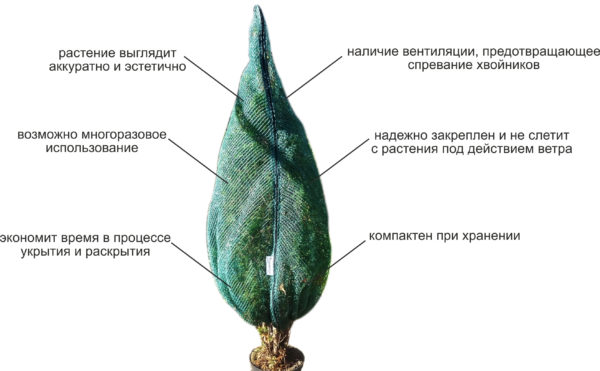
Winter protection for undersized shrubs
For creeping species of juniper and other young conifers, shelter for the winter is not difficult. It is only necessary to stock up on spruce branches and cover the young plantations in the form of a cone.
Shelter pine and spruce
Pine and Christmas tree need shelter only in the first year of planting. In order to insulate a young tree, it is necessary to do the following manipulations:
- strengthen the conifer by attaching it to the support;
- mulch the earth around the trunk and close with spruce branches;
- wrap crowns and branches with covering material.
If the tree does not grow stronger in the second year of life, shelter should not be neglected.
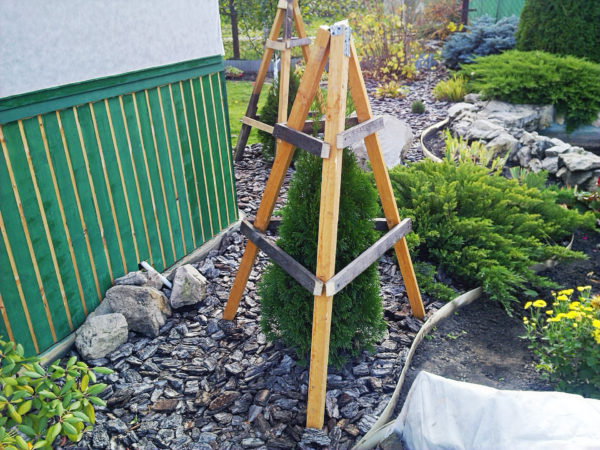
Larch Shelter
Larch is not afraid of the cold, and the need for shelter disappears 2.3 years after planting. In places with heavy snowfall, a tripod is installed above the plant. It is wrapped with suitable material on top: lutrasil, burlap, old sheets, etc.
Juniper Shelter
This type of coniferous tree is suitable for planting in summer cottages by beginner summer residents. For the first 3-4 years, juniper for the winter must be protected from burns, it also needs insulation. Juniper branches are very sensitive to sunlight. First thing:
- Bind twine branches to the trunk.
- Wrap the plant with covering material or garden bandage.
- Around the tree are stuck several metal pins, on which they put a metal mesh.
Cypress Shelter
It is recommended to plant a kaparisovik in places not blown by winds, and on the south side it needs shading. For this, shelter conifers for the winter. Most often they are tied with a cloth.
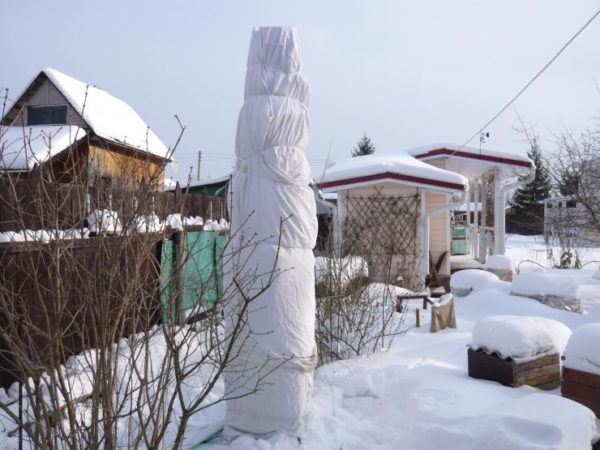
Thuja Shelter
Thuja is a shade-tolerant plant, so it feels uncomfortable in the sun. On sunny frosty days, it can get sunburned on the south side. It is recommended to wrap with light covering material before snow melting. Tall plants are wrapped with twine.
Yew Shelter
Sheltering conifers for the winter, such as yew, is indispensable for its survival.In the wild, yew grows in southern countries, so it needs winter shelter. It is recommended to twine the branches to the trunk and protect them from the cold with a white cover, leaving a small ventilation hole.
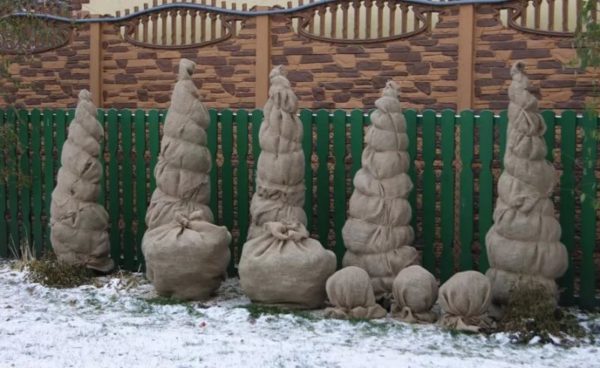
Fir shelter
The birthplace of fir is Siberia, and it, as a winter-hardy plant, needs shelter only at a young age. They cover it in the idea of a house with a spruce or put on a cover, adding mulch under a tree to preserve the roots.
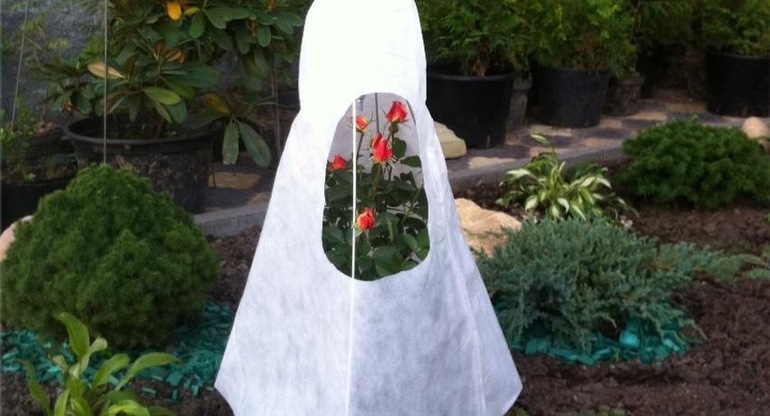 You may be interested in:
You may be interested in:In the spring, do not rush to remove the shelter. This should be done on a cloudy day when the temperature rises to about +10 degrees. To help plants completely move away from winter frosts, they can simply be sprayed with warm water with a growth stimulant.
If you carry out all the recommended procedures on time, conifers can easily survive the winter. It is always easier to prepare the plants correctly for wintering than to take measures in the spring to resuscitate the affected conifer.

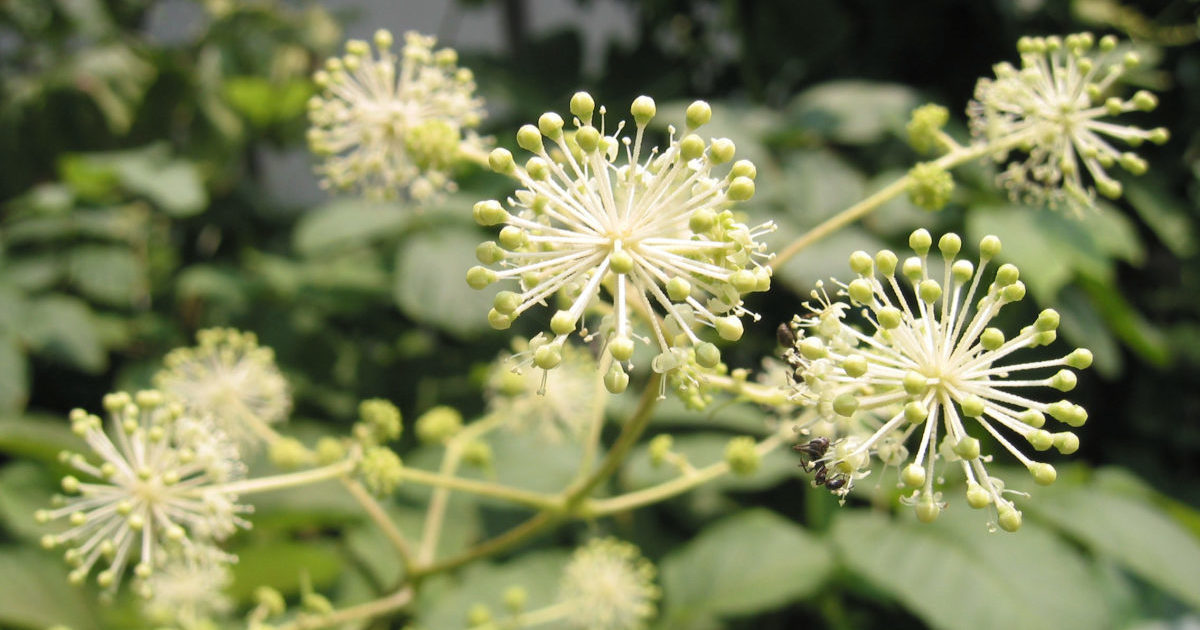 Aralia Manchurian - medicinal properties and contraindications, the use of tinctures in bodybuilding
Aralia Manchurian - medicinal properties and contraindications, the use of tinctures in bodybuilding Seedless pomegranate - cutaway appearance, benefits and harms
Seedless pomegranate - cutaway appearance, benefits and harms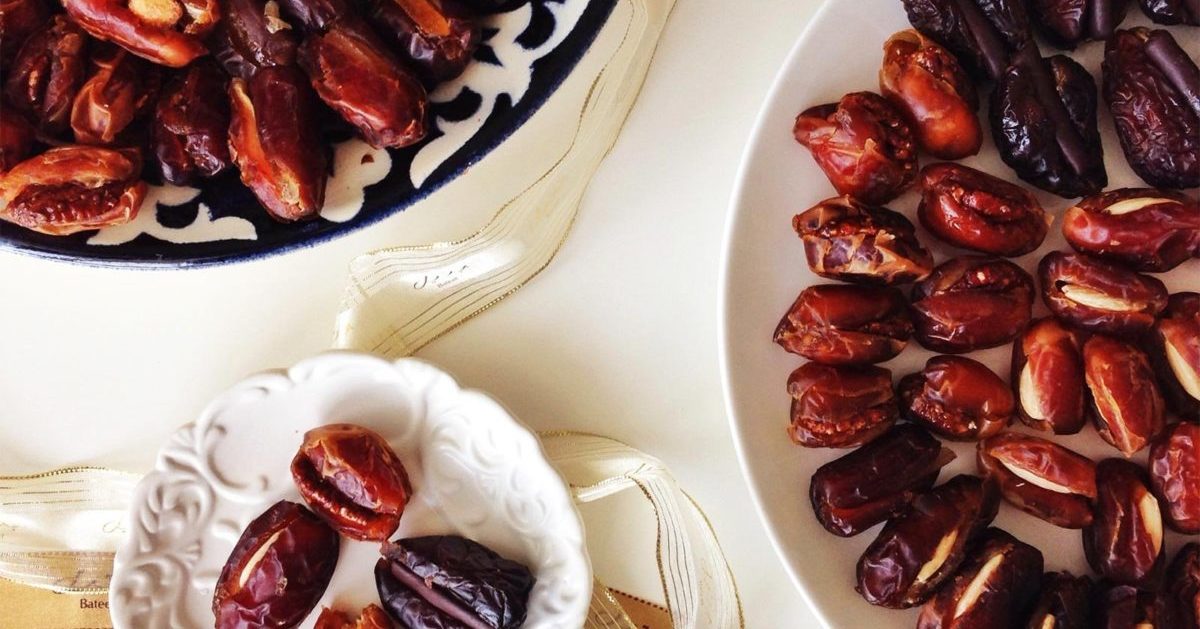 Dates - the benefits and harm to the body, how much you need to eat, properties and calorie content
Dates - the benefits and harm to the body, how much you need to eat, properties and calorie content The benefits and harms of mango for the body of women and men - how to eat it?
The benefits and harms of mango for the body of women and men - how to eat it?